QuestionHi there. Hoping you can help me. My pet rat Basil seemed to loose a lot of weight in the space of two days, I took him to the vet on the second day as he seemed disorientated and started refusing water when we were hand feeding him. She gave him an antibiotic injection and said it may help but if not he would have to be put to sleep. We fed him water and baby food through a syringe as advised and also gave him a syringe of rehydrating dyralite as advised by vet. We were keeping him warm when he started to jump about a lot and seemed to be gasping for breath, then he passed away. I am devestated and havent been able to sleep since it happened. The vet thought it may have been a tumor - would this cause this kind of death? Am so upset thinking of him suffering. The rat who he was living with seems to be ok so far but am wanting to be at home with him all the time to give him attention. Am also finding it difficult to introduce him to other rats and am worried he is lonely
AnswerHi Emma
I am so sorry for your loss.
For starters, you need a new vet and fast!!!! Any vet that would suggest putting a rat to sleep after giving it one shot of medication doesnt want to take the time out to help your rats. Your rat had pneumonia. The weight loss was water weight loss due to dehydration. He had an infeciton in his lungs and one single injection of medication (in most cases) will not do a thing for this type of infection. He should have been kept on oral medication and kept at the vets office in a heated and oxygenated enclosure. He was gasping for breath and jumping about because when rats die of pneumonia, they go into pre death panic mode. It is very upsetting for the rat owner to witness and I myself get so disturbed even reading about it because I have seen it so much and feel helpless when it occurs.
Anyhow, I would like to help find a good vet so if you can tell me your area I will give you names, no obligation of course.
As for intros to the new rat..what you need to do is do it slowly. Here is a good way to do is from another rat expert:
*****
Introducing New Rats
by Debbie Ducommun
The willingness of rats to accept a new roommate depends on their personality and age. It will take more time--sometimes up to several weeks--to introduce a newcomer to adult rats, but it can be done. With time and patience, almost any rat will accept a newcomer.
The introduction process has several steps and the time required for each may vary. The easiest pairing will be two young rats, while the most difficult introduction is between two adult males, especially if they aren't neutered. On the other hand, as rats start to age they can mellow out and be more accepting of new roommates. A young rat is the best choice for a new roommate for an adult male, but the newcomer should be at least six weeks old. This is because adult males will sometimes kill strange baby rats younger than this.
When introducing rats, you should have two cages so the new rat can have his own cage at first. (The second cage can be the resident rat's travel cage.) Never just plop a new rat in the resident rats' cage because the residents will always defend their territory.
During the introduction process, you should only advance to the next step if there is no sign of aggression within 30 minutes. A resident rat will express aggression by puffing up his fur, arching his back, and swinging his body sideways at the newcomer. If you see this type of behavior, remove the new rat quickly to prevent an attack. Use care when picking up an aggressive rat as they will sometimes bite. Pick them up with a towel. Or if need to quickly break up a fight, you can pick up the aggressor by the base of his tail. If an introductory session results in aggression, try again later, or go back a step.
When introducing a new rat to a group of rats, usually only the dominant resident rat will be aggressive toward the newcomer at first. This is the dominant rat's "job". Once the new rat is accepted by the dominant rat, the others may show some aggression in turn, but it usually won't be as severe.
The Introduction Process
The first step is to place the cages near each other so the rats can see and smell each other. Place wire cages far enough apart so the rats can't reach through the bars to the other cage, or the result may be bitten toes or tail. The next step is to switch the rats to each other's cage, even briefly. This allows them first-hand experience with each other's scent. You may have to do this several times.
The next step is to introduce the rats in neutral territory, which should be someplace where the resident rats are not used to playing. The bathtub is a good place. This will give them a chance to become acquainted without the residents feeling the need to defend their territory. Another technique that can work is to take the rats for a car ride in a neutral carrier.
The next step is to let them interact in an area where the residents are used to playing. Watch them carefully, because this is where some fighting may break out. It may also help if you put the new rat(s) in your lap along with the other rats. By holding everyone at the same time, it may let the residents know that YOU have already accepted the new rat.
The final step is to clean the larger cage out completely and rearrange the furnishings so it appears to be a new cage. Trim the back toenails of the rats to minimize scratching in a scuffle. Put vanilla extract or perfume on all the rats to make them smell the same. Then put the rats in this cage. The best time to do this is in the morning when rats tend to be sleepy.
The dominant resident will probably sniff the newcomer and then "attack" him, forcing him over on his back. If you've followed the introduction process correctly, don't rush to take the new rat out. Instead, carefully observe the fight. Observe whether the resident rat is showing the raised hair, arched back, and sideways approach that are signs of aggression. If so, remove the newcomer, but if not, leave them together. The resident rat must establish his or her dominance and it's normal for them to "beat up" the newcomer. Just because the new rat is squeaking doesn't mean it's getting hurt. This is just a rat's way of saying "I give up". As long as you have followed the introduction process step by step, and as long as the resident rat isn't showing the signs of agression, you should let the fight run it's course. If you take the new rat out, you'll prolong this adjustment phase.
However, if it appears that the new rat is being injured, or if the attack seems especially vicious, then of course you should remove him from the cage. But in most cases the "fight" will be over quickly. The dominant resident rat will probably beat up the newcomer frequently for the first few days, and you shouldn't interfere as long as there are no injuries. But the first attack is usually the worst, and before long the rats will typically become the best of friends, sleeping together and grooming each other.
One of my members also suggested something that worked well for her. She smeared all her rats with pudding! After they got it all licked off each other, they had bonded! But this was a group of rats who had lived in the same house for a while, not brand new rats. You would still need to go through all they preliminary steps first.
Because rats are individuals with their own personalities, occasionally two rats will take a dislike to each other and constantly fight. In some cases, this means the pecking order is changing and the fighting will stop eventually. Neutering any males involved will usually solve the problem. (After a male is neutered, it can take up to 8 weeks for their behavior to change.) However, if these fights continue for more than several weeks, such rats should be separated permanently.

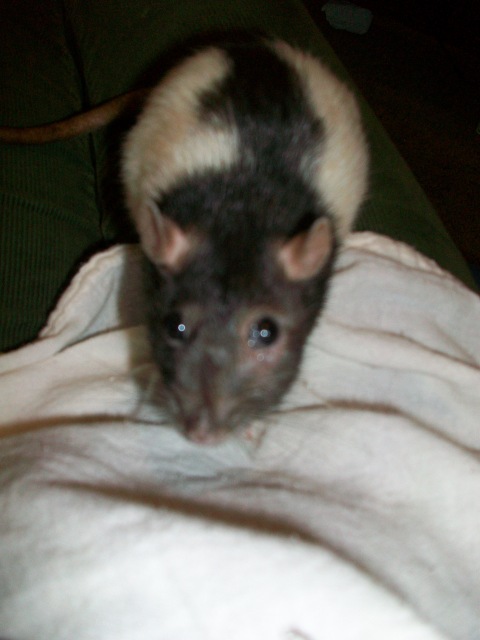 Half swollen face and eye looks like it could pop out.
QuestionQUESTION: My rat, Sage, has always been very sn
Half swollen face and eye looks like it could pop out.
QuestionQUESTION: My rat, Sage, has always been very sn
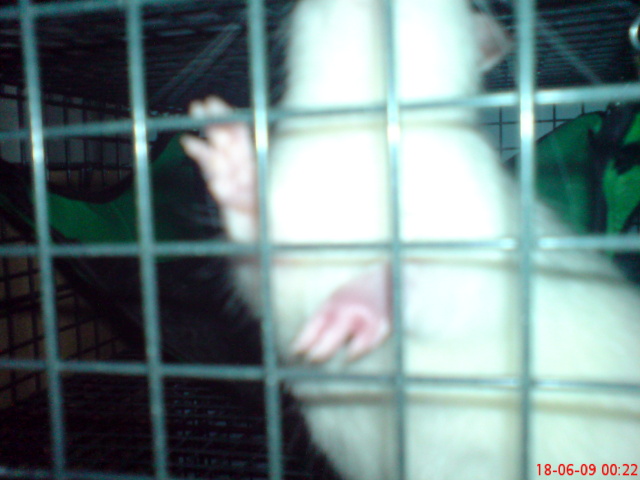 Swollen Paws
QuestionQUESTION: Ive had rats for many years but one o
Swollen Paws
QuestionQUESTION: Ive had rats for many years but one o
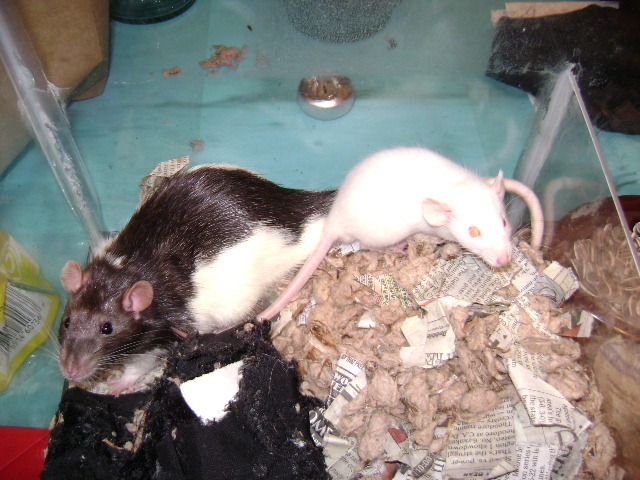 Rat Bully
Question
My boys.
I just have a question about introduc
Rat Bully
Question
My boys.
I just have a question about introduc
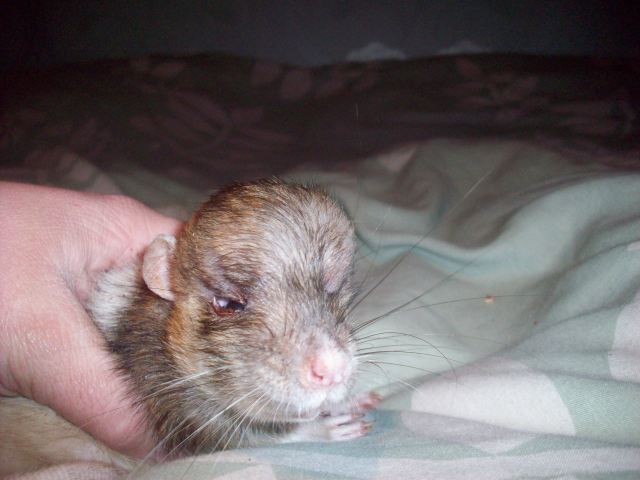 my rat bigboy
QuestionQUESTION: hi my name is stuart i have a male ra
my rat bigboy
QuestionQUESTION: hi my name is stuart i have a male ra
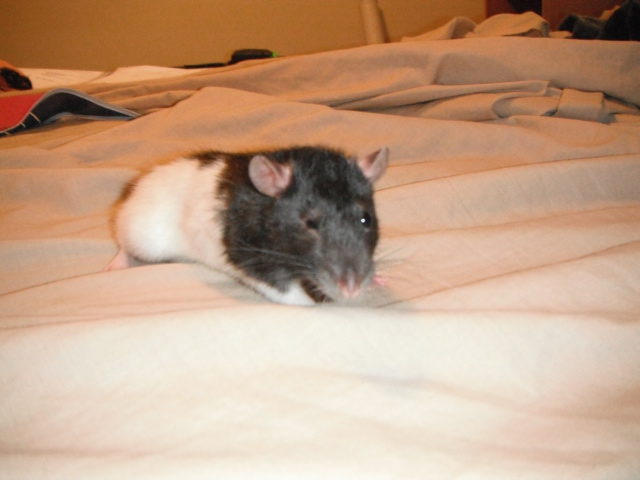 Rat with sore eye
Question
Female rat
Today I bought a female rat
Rat with sore eye
Question
Female rat
Today I bought a female rat